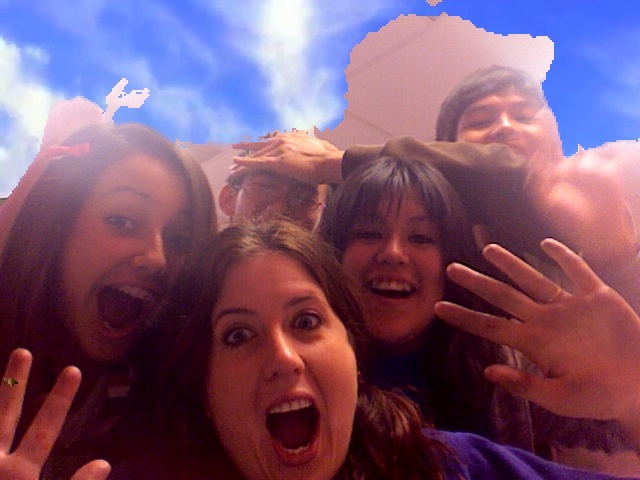Social Networking is, as defined by webopedia.com, is a social structure made of nodes, that are generally individuals or organizations. A social network represents relationships and flows between people, groups, organizations, animals, computers
or other information/knowledge processing entities.
With the web the possibilities for social networking are endless. There are social networking sites for friends, teachers, people with disabilities, lawyers, women, there is no end! There are so many possibilities for teachers to use social networking in the classroom. When looking through classroom 2.0 website, which in and of itself is a social networking site, I saw many examples of how people were using social networking at their school.
One woman who is a principal created a social network for the teachers at her school. People then commented to her that they had done the same thing and it was very beneficial. They teachers on the social network were able to communicate and feel a community setting within their school. Most of the time teachers are in their classrooms all day, so this allows teachers to communicate and get information without leaving their classroom. Another example of how this is being used is teachers were using social networking sites to communicate with their students. They are using it to have students post online journals, post assignments, have students communicate with each other, or with the teacher. It is a way to create a network outside the classroom to supplement what is going on in the classroom.
Wednesday, March 25, 2009
Wednesday, March 18, 2009
Wednesday, March 11, 2009
Wednesday, March 4, 2009
Journal 5
February 28, 2009
Journal #5
Bull, Glen (April 2006). Collaboration in a web 2.0 environment. Learning and Leading With Technology, Retrieved February 26, 2009, from http://www.iste.org.-AM-Template.cfm.Section=April_No_07&Tem
This article discusses all the advancements in web 2.0, and in particular what it has to offer students in the classroom. The article focuses on RSS, or web feed, is just another tool to make collaborating on-line even easier. These syndicated feeds make is easier to track what someone is doing on-line, useful to group project, multiple postings or track new feeds related to the subject without having to search all over the internet. The article then outlines many different ways educators can use the features of web 2.0 in the classroom. My favorite being ways in which students can collaborate in a project without having to meet up.
1. How is this helpful to students who don't have certain programs at home or can't afford the programs?
The brilliant thing about these collaboration tools is that they are accessible from any computer. These programs only require you to have in internet, so once you are online you can go on the websites and go from there. Also these websites run on advertisements, making them free to the user!
2. Will the students be interested in this type of learning?
Have you ever put a student in front of a computer and gotten much complaint? Now tell them to sit and take notes out of the book, which one of these is going to elicit a positive response? Students are becoming more and more attached to technology from the ipod to myspace to twitter. This is simply another outlet for them to get information online.
Journal #5
Bull, Glen (April 2006). Collaboration in a web 2.0 environment. Learning and Leading With Technology, Retrieved February 26, 2009, from http://www.iste.org.-AM-Template.cfm.Section=April_No_07&Tem
This article discusses all the advancements in web 2.0, and in particular what it has to offer students in the classroom. The article focuses on RSS, or web feed, is just another tool to make collaborating on-line even easier. These syndicated feeds make is easier to track what someone is doing on-line, useful to group project, multiple postings or track new feeds related to the subject without having to search all over the internet. The article then outlines many different ways educators can use the features of web 2.0 in the classroom. My favorite being ways in which students can collaborate in a project without having to meet up.
1. How is this helpful to students who don't have certain programs at home or can't afford the programs?
The brilliant thing about these collaboration tools is that they are accessible from any computer. These programs only require you to have in internet, so once you are online you can go on the websites and go from there. Also these websites run on advertisements, making them free to the user!
2. Will the students be interested in this type of learning?
Have you ever put a student in front of a computer and gotten much complaint? Now tell them to sit and take notes out of the book, which one of these is going to elicit a positive response? Students are becoming more and more attached to technology from the ipod to myspace to twitter. This is simply another outlet for them to get information online.
Subscribe to:
Comments (Atom)



